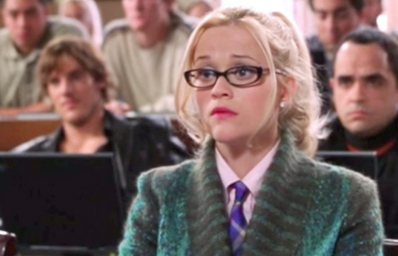As someone who grew up in the 2000’s, I’ve been thrilled by its nostalgic return in fashion, music, and more. The Y2K aesthetic emerged in the late 1990s to the early 2010s, and it’s illuminating to see how the trends have endured. Ask anyone about the 2000s a few years ago, and they might call the era tacky at best… or outrageous at worst. No one expected Jennifer Garner’s turquoise dress in 13 Going on 30 to make a comeback. Yet, with remixes of old school hits like Fergie’s “Glamorous” to ‘thrift flipping’ on Tiktok, we are also being reintroduced to the 2000s in the 2020s. It’s tempting to dismiss its revitalisation to the 20 year trend cycle, a phenomenon used to predict the movement of trends. However, I believe that Y2K offers us an intimate look at our progress as a society since the 2000s. For better or worse, its resurrection suggests that we have more in common than we think.
Y2K’s explosive revival is no coincidence. The year 2000 saw the dawn of another millennium and more than ever, people clutched onto their aspirations. They wanted more of everything, and so came classic 2000s glamour: skirt-over-pants, butterfly clips, sequins, gems, hot pink… and so on. It was also when the internet surged in popularity, meaning not only did trends catch on quicker, but there was also an increasing excitement about technology. I myself was obsessed with the futuristic gadgets in Men in Black and Charlie’s Angels that seemed only years away from invention. To me, it was a time period that was edgy and rebellious – one that demanded the freedom to experiment.
Now, we are similarly fast approaching a ‘new normal’ in our technologically advanced world. The days spent in quarantine bingeing old films and series have also reignited a burst of creativity, as well as the fame of 2000s icons like Paris Hilton, Britney Spears, and Megan Fox who serve endless inspiration. Currently, the essence of ‘more’ has truly persevered. We are overwhelmed by a wide selection of aesthetics, influenced by dominant 2000s pop culture. ‘Pink Pilates Princess’ combines the Y2K pink obsession with the ‘It Girl’ lifestyle. At its heart lies a modern day Elle Woods who invests in pink skincare, pink outfits, is always at pilates class and exudes the power of the girlboss of 2023. Meanwhile, the fashion of ‘Twilight Core’ falls on the opposite end of the spectrum. Characterised by darker and muted colours, it is more sentimental, reminiscent of the emo phases and gothic themes of the 2000s. As the pandemic has made the future seem frighteningly foreign, our fusion of old and new shows our desire for familiarity to be presented in fresh and hopeful ways. Whether it be to innovate or to escape, we find ourselves retracing our steps back to the past in order to move into the future. After all, it’s much easier to take and recreate something that has worked before.
While taking a trip down memory lane sounds like just what we need, there are some trends that are more insidious. For decades, the most desirable body type has had a trend cycle of its own. As low-rise jeans and mini skirts reigned in the 2000s, it was obvious that a skinny body type was desired, and there was a constant fixation on it. Today, a slim physique appears to be all the rage despite the years of body positivity. Resembling the cruel and suffocating diet culture back then, thousands of images and videos promoting clean eating and 7am workouts have spawned under the ‘It Girl’ lifestyle that is centred on perfecting a self-image of success through such mediums. Although seemingly well-intentioned, the trend has been repeatedly criticised for creating unrealistic expectations and worsening health and wellbeing. For decades, beauty standards have remained highly unattainable and in spite of strides made to embrace body diversity and inclusivity, there is clearly still work to be done.
Not to mention, pursuing the Y2K trend often requires an excessive amount of money – a mark of the hedonism and hyperconsumerism of the 2000s. Back then, there was something called the “logo mania” where designer-brand logos were the main focus of any item. Only recently, the low-waisted Miu Miu mini skirt took fashion and entertainment by storm before disappearing overnight. Its cost of USD$950 is impractical for most impressionable teens and young adults. Yet this extravagant price did not stop them from forming a large proportion of buyers. Aside from luxury brands, the online vintage and resale market has also flourished as a result, making thrifting much more expensive. Originally an avenue for disadvantaged communities to explore fashion in a more affordable way, thrifting has since lost its original nature and intention of environmental sustainability and income-friendliness. Furthermore, with the rise of values like FOMO, it is easy for fast fashion companies to take advantage of feelings of inadequacy and attract customers with cheap, mass produced Y2K inspired products that are not timeless. This results in customers, especially influencers, showing off massive hauls and inspiring others to purchase similar volumes, which creates more waste that counters the rise of secondhand shopping.
While the Y2K trend is an exciting and nostalgic time for some of us, its resurgence reminds us of the illusion of accessibility that started and continues on the Internet today. Burdened by the constant generation of content, we’re made to feel like the only ones out of the loop when in fact, only a select few can bear to consume and live this lifestyle comfortably. Although they come and go quicker than ever before, trends still show the pulse of the times. Situated along the broad spectrum of Y2K, the specific and detailed curation of sub-trends ultimately reveals our need to belong to a unique community. Yet, exercising caution and awareness is always advisable.

